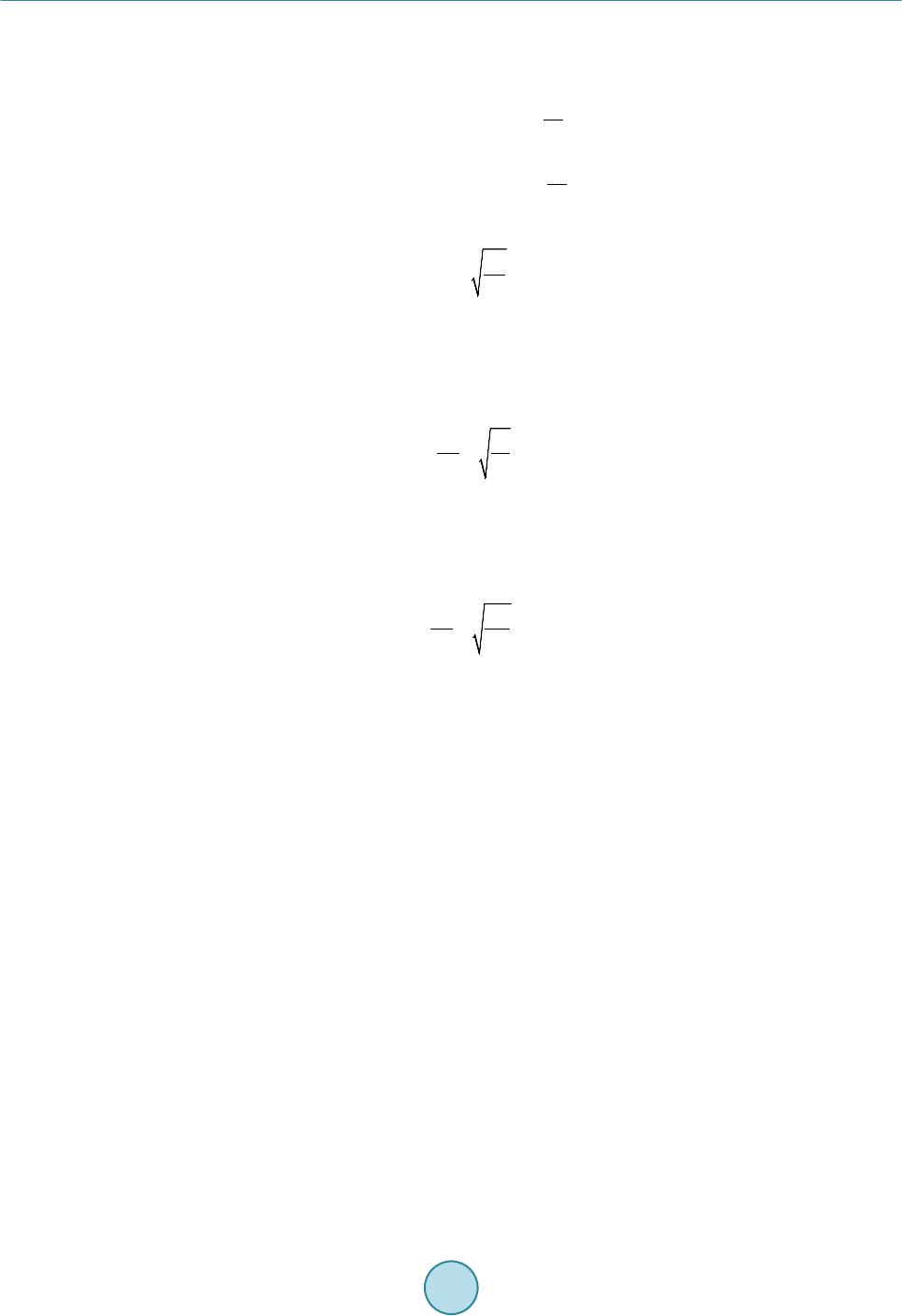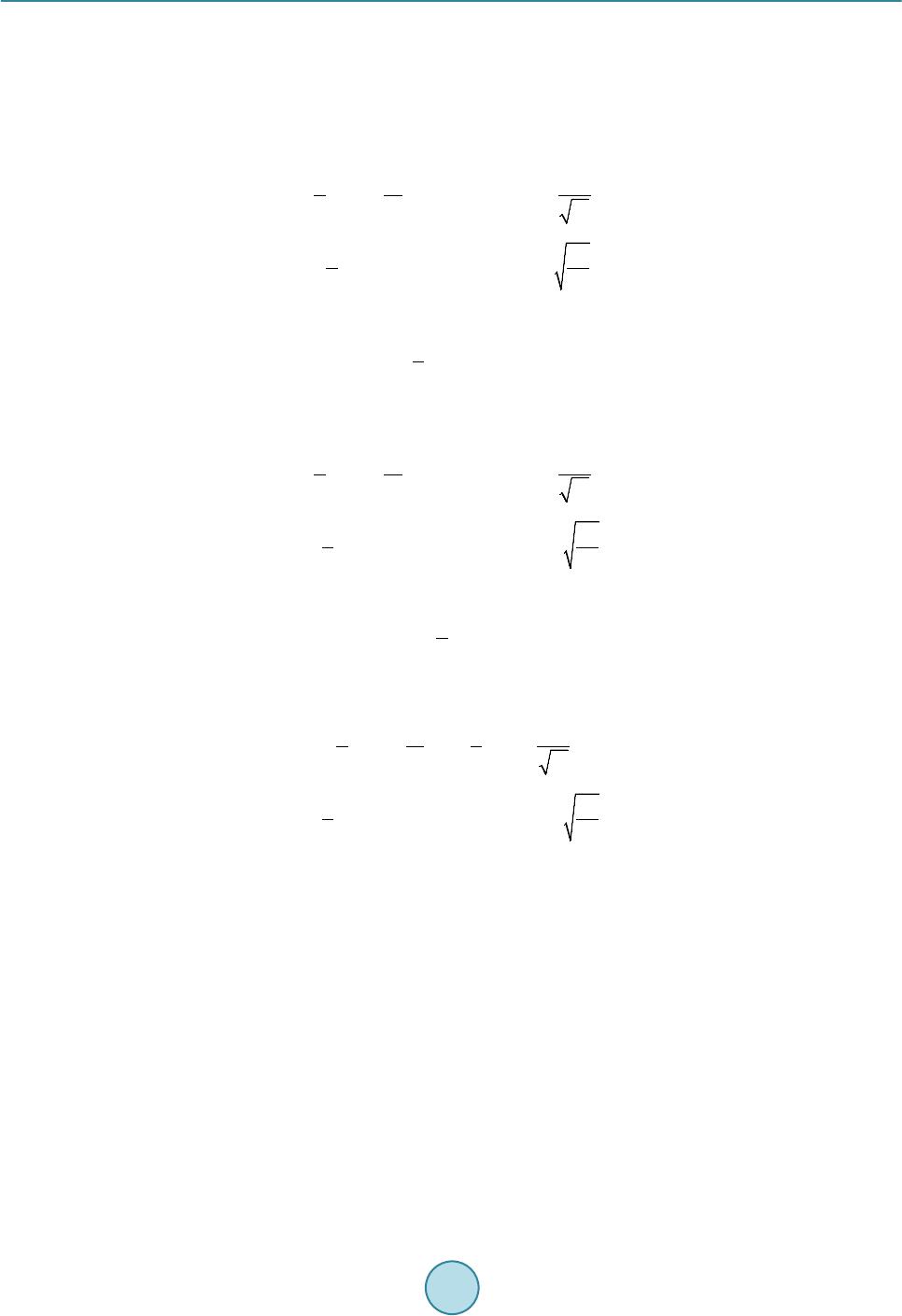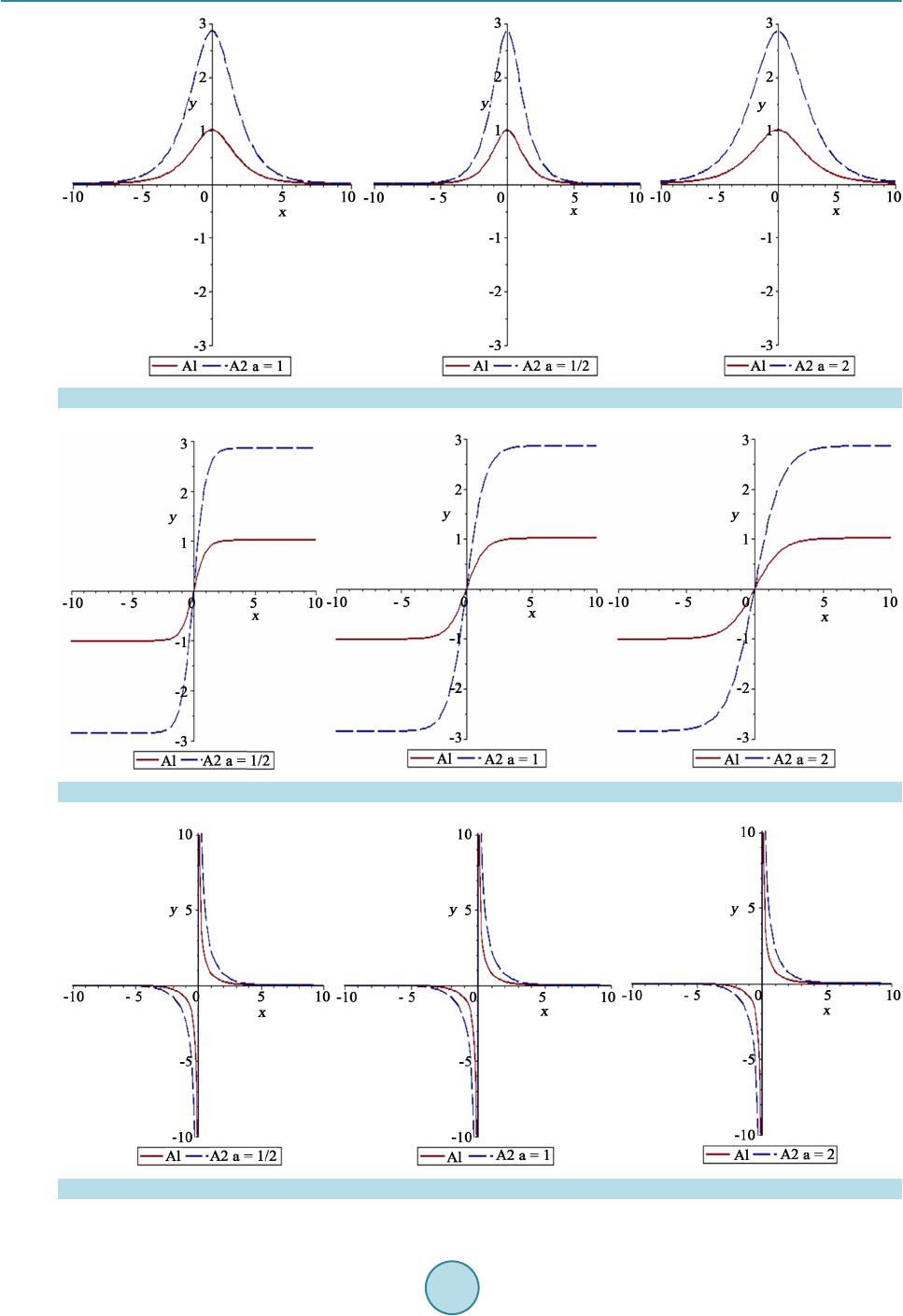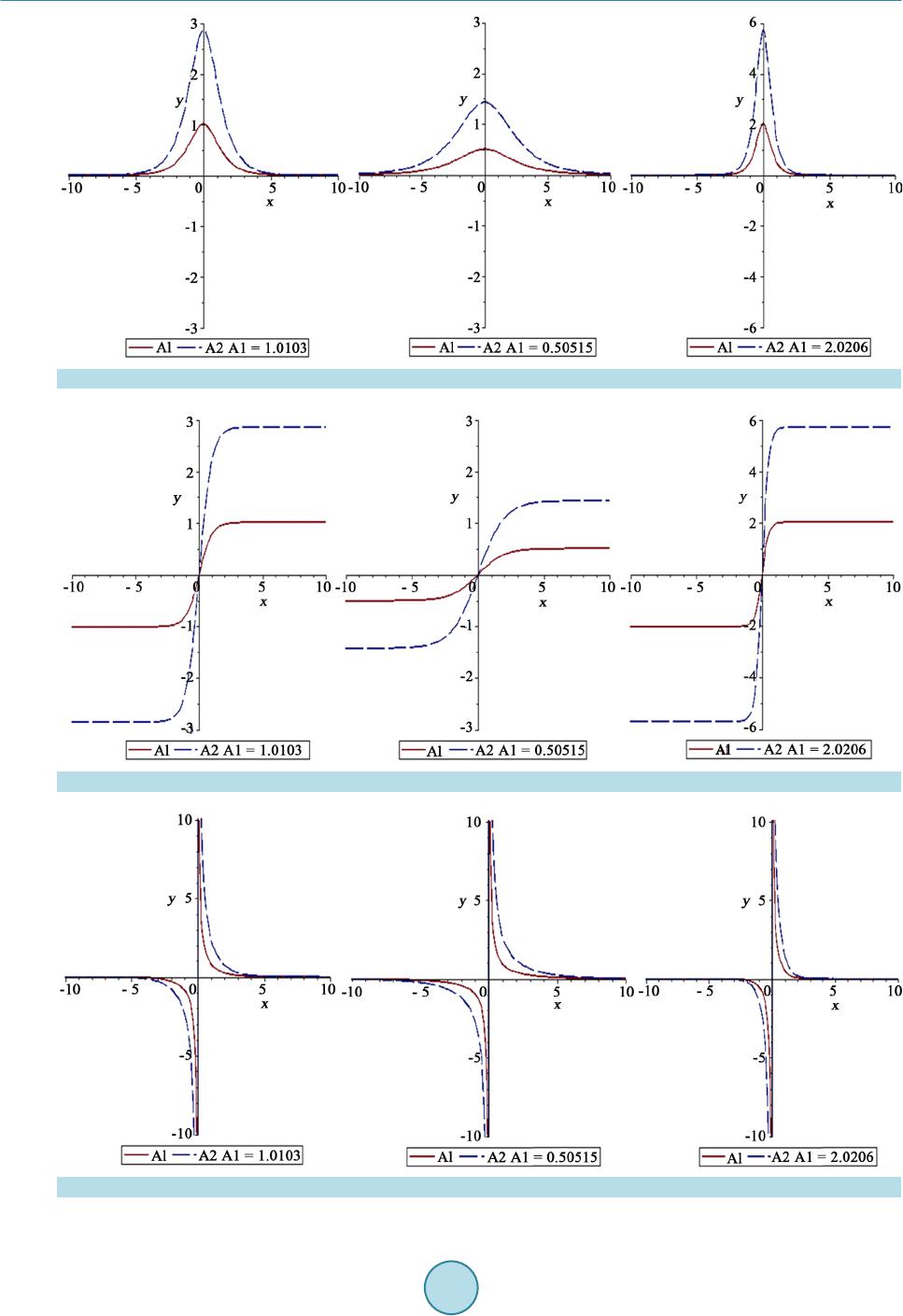 Applied Mathematics, 2015, 6, 1957-1967 Published Online November 2015 in SciRes. http://www.scirp.org/journal/am http://dx.doi.org/10.4236/am.2015.612173 How to cite this paper: Al Qarni, A.A., Banaja, M.A. and Bakodah, H.O. (2015) Numerical Analyses Optical Solitons in Dual Core Couplers with Kerr Law Nonlinearity. Applied Mathematics, 6, 1957-1967. http://dx.doi.org/10.4236/am.2015.612173 Numerical Analyses Optical Solitons in Dual Core Couplers with Kerr Law Nonlinearity A. A. Al Qarni1, M. A. Banaja2, H. O. Bakodah2 1Department of Mathematics, Faculty of Science for Girls, Bisha University, Bi sha , Saudi Arabia 2Department of Mathematics, Faculty of Science for Girls, King Abdulaziz University, Jeddah, Saudi Arabia Received 27 May 2015; accepted 6 November 2015; published 9 November 2015 Copyright © 2015 by authors and Scientific Research Publishing Inc. This work is licensed under the Creative Commons Attribution International License (CC BY). http://creativecommons.org/licenses/by/4.0/ Abstract In this paper, we present the results of numerical analysis of optical solitons in dual core couplers. We studied the optical couplers as an application for the non-linear Schrödinger equation in the case of Kerr law for non-linear and clarify the exact solution in this case. Then we have provided a numerical study of the effect of changing the constants in the form of the three types of s ol iton s: bright soliton and dark solitons and singular soliton. Keywords Optical Soliton, Dual Core Couplers, Kerr Law Nonlinearity 1. Introduction The propagation solitons through optical fibers have been a major area of study given its potential applicability in optical co mmunication syste ms. Several effects that are present in optical fibers and ampli fiers limit the per- formance of optical system. Signal propagation through optical fibers can be affected by group velocity disper- sion (GVD), polarization mode dispersion (PMD), and nonlinear effects. The main nonlinear effects that arise in monomode fibers are Brillion scattering, Raman scattering, and the Kerr effect. The Kerr effect of nonlinearity is due to the dependence of the fiber refractive index on the field intensity. The intensity dependence of the re- fractive index leads to a larger number of interesting nonlinear effects. Notable among them, which have been studied widely, are self-phase modulation (SPM) and cross phase modulation (XPM). The propagation solitons through optical fibers have been well established that this dynamics is described, to first approximation, by the integral nonlinear Schrodinge r equation (NLSE) [1]. The N onlinea r Schr odin ger’s Eq uation plays a vital ro le in various areas of physical, biological, and engineering sciences. It appears in many applied fields, including fluid dyna mi c s, nonlinear optics, plasma physics, and protein chemistry. The NLSE that is going to be studied is giv-  A. A. Al Qarni et al. en by (1) F is a real-valued algebraic function, q is the dependent variable, x and t are the independent variables. Equation (1) is known to support solitons or soliton solutions for various kinds of nonlinearity. There are various kind s of nonli nearit i es o f the function F in ( 1) tha t are known so far. The special case where , also known as the kerr law of nonline arit y, is i ntegr able b y the metho d of inverse scattering transform (IST) [2 ]-[5]. The Kerr law of nonlinearit y originates from the fact that a light wave in an o ptical fiber faces nonlinear res- ponses from nonharmonic motion of electrons bound in molecules, caused by an external electric field. Even though the nonlinear responses are extremely wea k, their effects appear in vario us ways over long distances of propagation that are measured i n ter ms of light wavelength. 2. Dual -Core Couplers Nonlinear couplers are very useful devices that distribute light from a main fiber into one or more branch fibers. Couplers also have applications as intensity dependent switches and as limiters. Switching is the process of energy redistribution between the cores for a given input. The problem of switch- ing, although involved, can be accomplished when the stability of soliton states is known. Although there has been a lot of work in the area of optical couplers, our approach in this paper is going to present the special cases of the kerr-law no nli ne ar ity. Also, t he r e has been a lot of exact and approximate numerical studies in the context of optical couplers. But these numerical techniques could get computatio nall y intense [6] [7]. For Dua l-core couplers, wave p ro pagatio n at relativel y high field in tensitie s is descr ibed by co upled nonlinear equa tions. In the dime nsionl ess form, they are ( ) 2 11 1t xx iqa qbFqqKr++ = (2) ( ) 2 22 2t xx ira rb FrrKq++ = (3) Equa t ions (2) and (3) represent a generic model to study the dynamics of optical solitons through dual-core optical couplers. The first term in both equations represent linear temporal evolution. The coefficients of for is the group velocity dispersion (GVD) while represent non-Kerr law nonlinearity, in general. On the right hand sides are the coupling coefficients. The dependent variables and are the com- plex-valued wave profiles that propagate through these couplers. In this research, the focus is limited to soliton signals. The functional F represents non-Ke rr law nonlinearity, i n general. For Kerr l aw nonli nearity, . The model Equations (2) and (3) reduces to (4) (5) For integrality aspects of this coupled equations by ansatz method an assumption of the following form is considered: () () () , 1 , ,e i xt q xtPxt φ = (6) ( )( ) () , 2 , ,e i xt r xtPxt φ = (7) where represents the amplitude components of soliton while the phase component is (8)  A. A. Al Qarni et al. In (6), K is the frequency of t he solution ’s while ω represents the wave number and is the phase consta nt. Substituting (6) and (7) into (4) and (5) and then decomposi ng into real and imaginary parts give ( ) ( ) 22 2 2 0 l llll lll l P aPakbF PPKP x ω ∂−+ +−= ∂ (9) and (10) Respectively. From the imaginary part equation it is possible to obtain the speed (v) of the soliton as, (11) Since can be represented as , where the function g is the soliton wave profile depending the type of nonlinearity and v is the speed of the soliton. Now, equating the two values of the soliton speed, from (11) leads to (12) The speed of the soliton therefore red uces to (13) The coupled NLSE for dual-core couplers given by (4) and (5) modifies to ( ) 2 11 1t xx iqa qb FqqKr++ = (14) ( ) 2 22 2t xx ira rb FrrKq++ = (15) where Consequently, the real part Equation (9) reduces to ( ) 22 2 3 0 lllll l l P aPakbP KP x ω ∂− ++−= ∂ (16) This equation will no w be integrated for three typ es of solit ons. The y are bright, da rk and sing ular solito n so- lutions. 3. Families of Soliton Solutions 3.1. Bright Solitons For bright solitons, one assumes [8] [9] (17) where; (18) Here, represents the soliton a mplitud e a nd is the inverse width of the soliton. Substitutin g (17) into (16) gives: ( ) ( ) ( ) 2 2 222 3 3 sech1 sech sechsech 0 ll l l pp llll l P p ll l l AakapBaAp Bp b AKA ωτ ττ + +−+ + − += (19 ) Balancing pr inciple yields (20) So that (21)  A. A. Al Qarni et al. Substituting (21) into (19) we get: () () 222 33 sech2sechsech 0 ll llll AakaBaA BbAKA ω τττ +−+ −+= (22) From coefficient into (22) we get and therefore: (23) From coefficient we get and therefore: (24) which poses the constraint (25) Thi s means that the GVD and Kerr law nonl inearity must bear the sa me sign for b right so litons to exist. Next, equating the width of the solitons for from (24) imply And therefore: ( 26) whi ch again shows the (27) This shows that the nonlinearity of the two cores must also carry the same sign. Then, equating the wave numbers for the two components gives the relation (23) we get and therefore: (28 ) which again shows that (29 ) Finally eq uating (26) a nd (28) leads to (30) whic h is the co nstrai nt condi tion b etween t he give n coef ficients that must hol d for b right so litons t o exist. This leads to the br ight 1-soliton so lutio n for dual coupler s: ( )() ( ) 1 , seche i kxt qx tABxvt ωθ −++ = − (31) ( )() ( ) 2 ,sech ? i kxt rxtABxvt ωθ −++ = (32) which will exist fo r the necessary constra ints in place. 3.2. Dark Solitons For dark solitons, the starting hypothesis is given by [6] (33) with the definition of being the same in (18). However for dark solitons the parameters and B are free parameters. Substituting (33) and (18) into (16) leads to ( ) ( ) ( ) 2 2 222 23 23 2tanh1 tanh 1 tanhtanhtanh0 ll l ll pP lll ll p pp ll lllll AakapBaABpp aApB pbAKA ωτ τ τττ − + ++ = −− −+− + (34)  A. A. Al Qarni et al. Balancing pr inciple yields (35) So that (36) Substituting (36) into (34) we get: () () 222 33 tanh2tanhtanh 0 ll llll AakaBaA BbAKA ω τττ +−+−+= (37) From coefficient we get and therefore: (38) From coefficient we get and therefore: (39) which poses the constraint (40) Thi s means that the GVD and Kerr law nonl inearity must bear the sa me sign for b right so litons to exist. Next, equating the width of the solitons for from (39) implied and there fore: (41) which again shows that (42) This shows that the nonlinearity of the two cores must also carry the same sign. Then, equating the wave numbers for the two components gives the relation (38) we get And therefore: (43) which again shows that (44) Finally equating (41) and (43) leads to (45) Thi s gives dark 1 -soliton solution for dual-core couplers ( )() ( ) 1 , tanhe i kxt qx tABxvt ωθ −++ = − (46) ( )() ( ) 2 , tanhe i kxt rxtABxvt ωθ −++ = − (47) along with their respective constraints as indicated. Note: These waves known as check waves. 3.3. Singular Solitons For singular solitons, the s t arting hypothe sis is given by [6]  A. A. Al Qarni et al. (48) where is the same as in (18) while the parameters and B are again free parameters. Upon substituting (48) and (16) into (18) gives ( ) ( ) 23 2 2223 1 cschcschcsch0 l ll p pp lllllllll AakapBaA BppbAKA ω τττ + +− −+−+= (49) Balancing pr inciple yields (50) So that (51) Substituting (51) into (49) we get: () () 222 33 csch2cschcsch 0 ll llll AakaBaA BbAKA ω τττ +−+ −+= (52 ) From coefficient we get and therefore: (53) From coefficient we get and therefore: (54) which poses the constraint (55) Thi s means that the GVD and Kerr law nonl inearity must bear the sa me sign for b right so litons to exist. Next, equating the width of the solitons for from (54) implied And therefore: (56) which again shows the (57) This shows that the nonlinearity of the two cores must also carry the same sign. Then, equating the wave numbers for the two components gives the relation (53) we get And therefore: (58) which again shows that (59) Finally equating (56) and (58) leads to (60) These lead to singular 1-soliton solutions in dual-core optical fibers with Kerr nonline arity given by ( )() ( ) 1 , csche i Kxt qx tABxvt ωθ − ++ = − (61) ( )() ( ) 2 , csche i Kxt rxtABxvt ωθ − ++ = − (62) which will exist fo r the necessary constra ints in place.  A. A. Al Qarni et al. 4. Results of Numerical Analyses Analytic process of the CNLS can only be found under certain special selections of parameters, i.e. certain un- derlying physical system. For other cases, numerical analysis is necessary for seeking the evolution o f solutions. It is essential to select a suitable numeric al method for solving the equations [10]. To study the effect of paramet er s on Solitons we conside r the following values [11]: Case 1: if they 1 12 12 22 16 ,,1.0103,,2, 2 A bKAAv ak bb ===== − 2 12 1, 1,6,3,,π 22 b a kKBA a ωθ ====== Studying the ef fect of cha nging (non-linear coefficient) in terms of so take three cases Figures 1-3 shows the e ffect of this cha nge on S oliton amp litude. Case 2: if they 1 12 12 22 16 ,,1.0103,,2, 2 A bKAAv ak bb ===== − 2 21 12 1, 1,6,3,,π 42 b b bkKBA a ωθ ==== == Studying the ef fect of cha nging a (velocity dispersion coefficient) on the wave form and the values Figure 4-6 shows t he effect of this change on the width Soli ton . Case 3: if they 1 12 2 22 1 61 ,,,, 2, 22 A bKaAv ak bb ===== − 2 21 12 1, 1,6,3,,π 42 b b bkKBA a ωθ ==== == Studying the ef fect of cha nging (So liton amplitude) on the wave form, and that the values of 1 11 0.550515, 1.0103,2.20206A AA== = Figures 7-9 shows the effect of this change on the Soliton width and Soliton amplit ude. 5. Conclusions The study couplers dual core is considered one of modern topics of great importance in the field of optical communication. In this research, the Schrodinger equation is linear been studying these couplers in the case of kerr law no nlinearit y and clarifying t he exact solution in this case. An d we studied the effect of changing constants derived under the restrictions mentioned on Soliton form in the case of Solitons bright as in the case of a change b2 (non-linear coefficient) impact on soliton amplitude. When yo u c ha n ged a (velocity dispersion coefficient), we f ound tha t the ef fect on Soli to n width as well as when changing (Soliton amplitude), the i mpact o n the Soliton width and Soliton amp litude. Similarly, these changes have in the case of dark Solito ns an d singular Solitons. The extension of this work can apply different types of non-linear as well as increase the Perturbation terms to  A. A. Al Qarni et al. Figure 1 . Bright solitons. Figure 2 . Dark solitons. Figure 3 . Singular solitons.  A. A. Al Qarni et al. Figure 4 . Bright solitons. Figure 5 . Dark solitons. Figure 6 . Singular solitons.  A. A. Al Qarni et al. Figure 7 . Bright solitons. Figure 8 . Dark solitons. Figure 9 . Singular solitons.  A. A. Al Qarni et al. offset the Schrodinger non-linear. As that finding, those solutions to some numerical methods provide a lot of add-ons in this study, and this is what we hope implemented with God’s help in the future through the Master thesis. References [1] Biswas, A. (2003) Theory of Optical Couplers. Optical and Quantum Electronics, 35, 221-235. http://dx.doi.org/10.1023/A:1022852801087 [2] Zakharov, V.E. and Shabat, A.B. (1972) Exact Theory of T wo-Di mensio nal Sel f-Focusing and One-Dimensio nal Sel f- Modulation of Waves in Non-Linear Media. Journal of Experimental and Theoretical Physics, 34, 62. [3] Ablowitz, M.J. and Segur, H. (1981) Solitons and H. Segur , Solitons and the Inverse Scattering Tran sfo r m. SIAM, Phi- ladelphia. [4] Mihalache, D. and Panoiu, N.C. (1992) Exact Solutions of Nonlinear Schrodinger Equation for Positive Group Veloci- ty Dispersion. Journal of Mathem ati c al P hy s ic s, 33, 2323. http://dx.doi.org/10.1063/1.529603 [5] Mihalache, D. and Panoiu, N.C. (1993) Analytic Method for Solving the Nonlinear Schrodinger Equation Describing Pulse Pr opa g a t ion in Dispersive Optic Fibers. Journal of Physics, A26, 2679. http://dx.doi.org/10.1088/0305-4470/26/11/016 [6] R amos, P.M. and Pavia, C.R. (2000) Self-Routing Switching of Soliton-Like Pulses in Multiple-Core Nonlinear Fiber Arrays. Journal of the Optical Society of America B, 17, 115. [7] Biswas, A. (2001) Solitons in Nonlinear Fiber Arrays. Journal of Electromagnetic Waves and Applications, 15, 1189. http://dx.doi.org/10.1163/156939301X01101 [8] Biswas, A. , Khen, K.R., Rahman, A., Yildirim, A. , Hayat , T. and Aldossary, O.M. (2012) Journal of Optoelectronics and Advanced Materials, 14, 571. [9] Sarescu, M., Bhrawy, A.H ., Alsaery, A.A., Hilal, E.M., Khan, K.R., Mahmood, M.F. and Biswas, A. (2014) Optical Solitons in Nonlinear Directiona l Coupler s with Spation-Temporal Dispersion. Journal of Modern Optics, 61, 441-45 8. http://dx.doi.org/10.1080/09500340.2014.894149 [10] Banaja, M.A., Alkhateeb, S.A., Alshaery, A.A., Hilal, E.M., Bhrawy, A.H., Moraru, L. and Biswas, A. (2014) Optical Solitons in Dual-Core Couplers. Wulfenia Journal, 21, 366-380. [11] Biswas, A., Lott, D.A., Sutton, B., Khan, K.R. and Mahmood, M.F. (2013) Optical Gaussons in Nonlinear Direction al Couplers. Journal of Electromagnetic Waves and Applications, 27, 1976-1985.
|